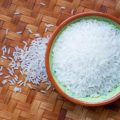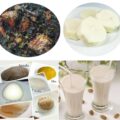Epidemiological studies have linked whole grain intake to the prevention of the metabolic syndrome, obesity and associated chronic diseases. Other than its superior nutritive value, cereals are popularly used in kitchens all over the world due to their prolific growth and plentiful production in most countries. In Nigeria, especially in the North, cereals constitute a major part of the diet of the population and it is an important component in the food of children and babies in Nigeria.
Health Benefits Of Cereals
The health benefits of cereals are discussed comprehensively below:
Source of Energy
Cereals are probably the greatest source of energy for humans. Providing almost 30% of total calories in a regular diet, cereals are probably the most widely consumed caloric food in America. This percentage rises in places like rural Africa and Asia where cereals are reported to supply almost 70 to 80% of energy requirements (since people in these regions cannot afford to eat other food products like fruits, vegetables, meat, or milk products). Cereals are inexpensive and a widely available source of energy; this is probably the prime reason why people from all budgets prefer cereals as the major energy provider in their diet. Cereal intake tends to be quite high amongst poor income families as they attain a good amount of energy through minimal expenditure.
High Mineral Content
In cereals, around 95% of minerals are sulfates and phosphates of magnesium, potassium, and calcium. A good amount of phosphorous, called phytin, is present in cereals. The phytates present in the cereals considerably reduce the activity of iron absorption. The unrefined cereals have more phytates as compared to refined cereals. After the seeds germinate, phytates diminish due to the breakdown of enzymes, and then the iron content is enhanced. This is the reason why malted flours of cereals are said to have more nutritional value than raw flour. Zinc, copper, and manganese are also present in small quantities. Cereals hardly have calcium and iron, but millet is an exception to this. Amongst cereals, rice is the poorest source of iron and calcium. Millets, jowar, and bajra have high amounts of minerals and fiber.
Prevent Cancer
Whole wheat products reduce the chances of breast cancer. Cereals are rich in phytosterols or plant-based steroids and plant estrogen that stimulate the hormone estrogen. Phytosterols bind to estrogen receptors present in the tissues of the breast and block human estrogen that promotes the growth of breast cancer. Many studies have shown that colon cancers can be avoided by consuming whole wheat products or any fiber-rich cereals. Phytosterols increase the stool movement through the intestines, thereby constricting the re-absorption time of the estrogen into the blood through the colon wall.
Prevent Constipation
Cereals have both insoluble and soluble fibers like cellulose, pectin, and hemicellulose. These fibers are present in the bran and pericarp, which often gets demolished while processing, thus it is advisable to consume whole cereals to cure extreme constipation troubles. Cereals also effectively improve peristalsis in the intestine and increase the bulk of the stools, thus keeping your internal system clean. Millet is high in cellulose and has excellent laxative properties that relieve constipation. Brown rice is also helpful for treating this disorder.
Maintain Blood Sugar Level
The fiber content in cereals decreases the speed of glucose secretion from the food, thereby maintaining sugar levels in the blood.
Provide Protein
Proteins are present in every tissue of the cereal grain. The concentrated protein-rich areas are scutellum, embryo, and the aleurone layer and moderate amounts can be found in the endosperm, pericarp, and testa. The concentration of proteins becomes denser in the endosperm from the center to the borderline. The cereal proteins are of different types; like albumins, prolamines, gliadins, globulins, and glutelins. These types of proteins are called “gluten” proteins. This gluten has extraordinary elasticity and mobile properties, mainly present in wheat grain, but also in some other types of cereal.
Cereals usually have 6-12% protein but they lack lysine. The protein content varies in each type of cereal. For instance, rice contains less protein in comparison to other cereals. In fact, the protein percentage even varies with different varieties of the same cereal. Although less in amount, the quality of rice protein is better than the protein of other cereals. When you consume cereals with pulses, the protein quality automatically improves, owing to the mutual supplementation. Pulses have high lysine content and are deficient in methionine; on the other hand, cereals have an abundance of methionine.
Multimorbidity
Recent research suggests that a greater consumption of vegetable, whole grain products, and fruits may lower the risk of multimorbidity.
Source of Vitamins
If you are suffering from a deficiency in the vitamin B complex, add whole grain cereals to your diet. Most of the vitamins of cereals are present in the outer bran, but the refining process usually reduces the vitamin B content, and thus it is advisable to consume whole grain cereals. Cereals are usually devoid of either vitamin A or vitamin C; only maize has small amounts of carotene. The cereal grains are processed to extract oils that are rich in vitamin E. Rice bran oil has more concentrated amounts of vitamin E than other oils available on the market.
Cereal grains are rich in enzymes, particularly protease, amylase, lipases, and oxidoreductases. After the seed germinates, the amylase content actively increases. The germ encloses the protease enzymes.
Cereals are undoubtedly full of nutrition, but unfortunately, the refining process degrades their quality. The degree of milling, polishing, and refining to some extent decides the nutrient content of cereals. Some nutrients are lost during food preparation, especially vigorous washing, soaking, and cooking methods, which result in the depletion of the nutrients on the skin of the grains.
List of Healthy Cereals In Nigeria
Millet
Millet is a whole grain that’s packed with protein, antioxidants, and nutrients. It may have numerous health benefits, such as helping lower your blood sugar and cholesterol levels. Plus, it’s gluten-free, making it an excellent choice for people who have celiac disease or follow a gluten-free diet.
Oats
Oats are among the healthiest grains on earth. They’re a gluten-free whole grain and a great source of important vitamins, minerals and antioxidants. Studies show that oats and oatmeal have many health benefits. These include weight loss, lower blood sugar levels and a reduced risk of heart disease. Oats also contain fiber which is great for digestive health. If you have chronic constipation issues, consuming oats every morning will be helpful. One cup of oats contain four grams of fiber. You can include fruits and nuts to increase the fiber value of your breakfast.
Guinea Corn
This superfood is rich in micronutrients such as vitamins B, copper, iron, potassium, magnesium, etc. It not only has a lot of health benefits for adults but also for babies especially. Apart from Nigeria, people eat it throughout the world. It is especially valuable in arid terrains because of its resistance to drought. Guinea corn is a nutrient-rich grain that is often ground into flour. People use it to make bread, porridge, and pancakes.
Local Rice
Although super processed rice is not necessarily bad, its low fiber content may help with digestive issues. However, brown rice is ultimately healthier and more nutritious. Whole-grain rice varieties contain the bran and germ, providing more of specific nutrients like fiber, protein, antioxidants, and certain vitamins and minerals. Choosing whole-grain over white rice can benefit health in many ways and may even reduce your risk of type 2 diabetes, obesity, and heart disease. Ofada rice is a good example.
Packaged Cereal Products
When looking for a healthy cereal option on your own, know that all cereals should have a 100% whole grain or whole food as the first ingredient (like whole-grain oats, wheat, corn, buckwheat, rice, or legumes) and a hearty combination of protein and fiber (aim for 3g of each per serving). Make sure there’s 10g or less of added sugar and about 200mg or less of sodium. To make it suitable for a standalone meal, scoop out a 250 to 300 calories serving, or combine it with yogurt, milk, fruit, a tablespoon of nuts or nut butter, or seeds that are about 100 to 200 calories per serving. Example of healthy options in Nigeria include Golden morn, Cornflakes and others. SEE: List of Low Histamine Cereals





